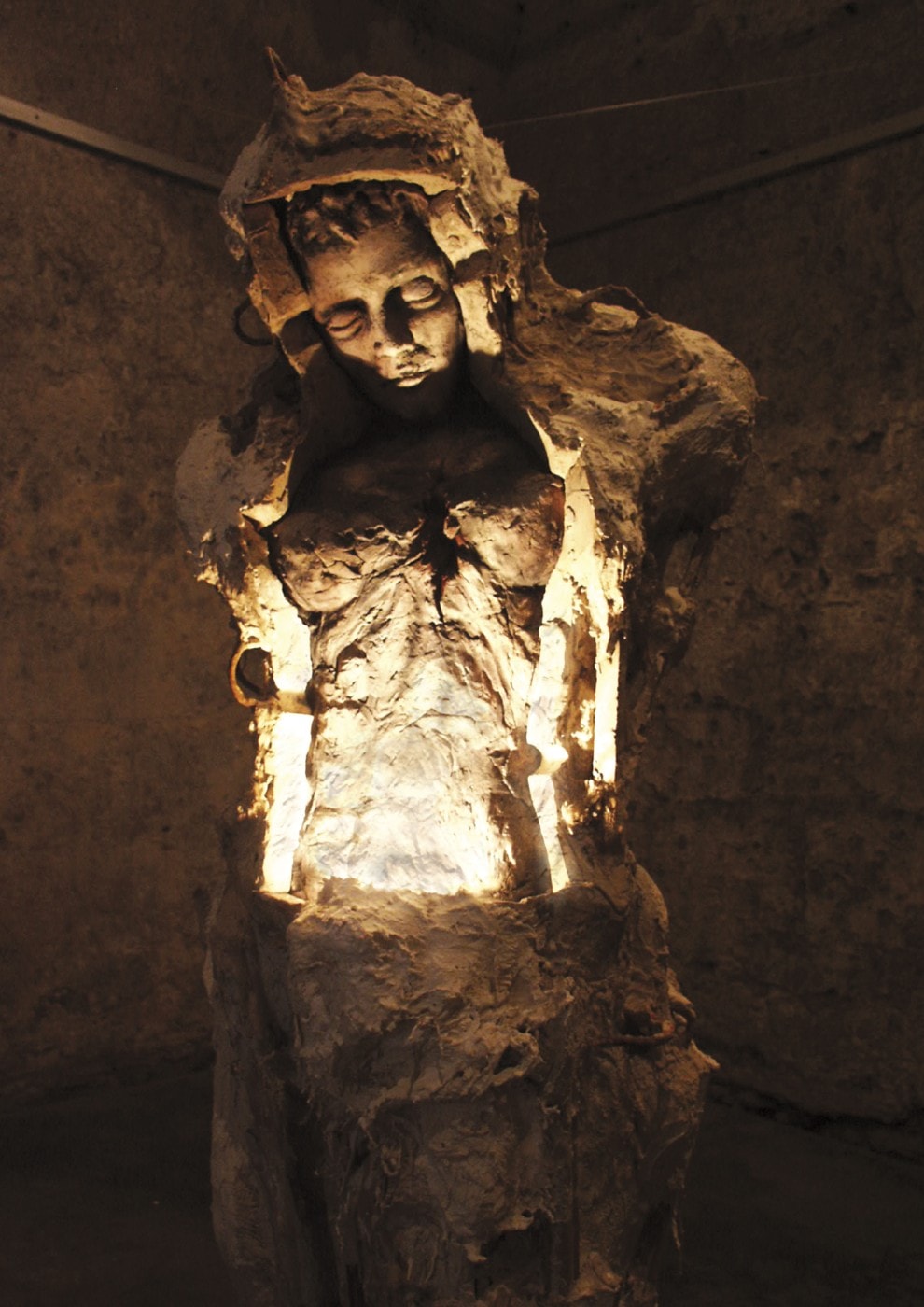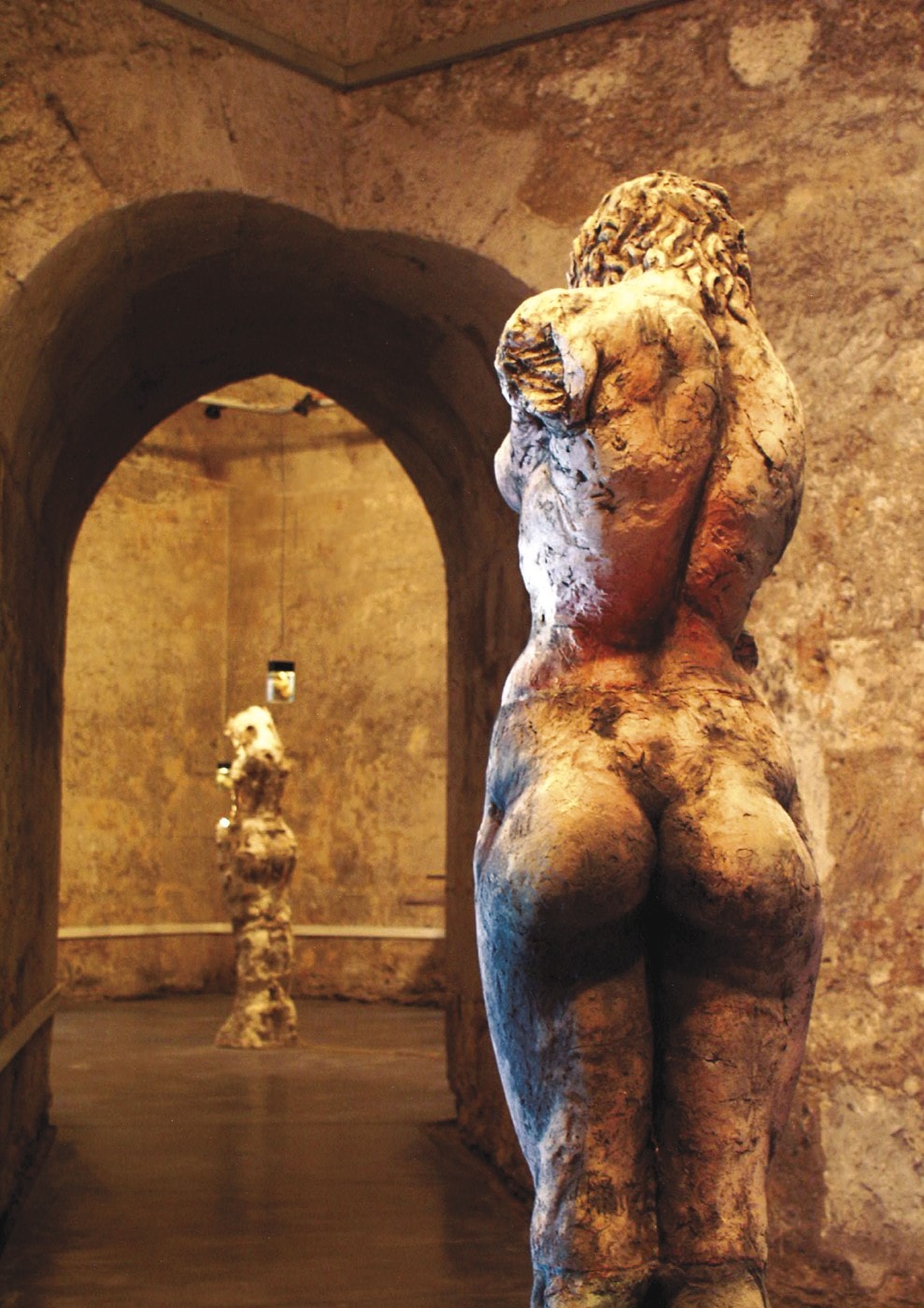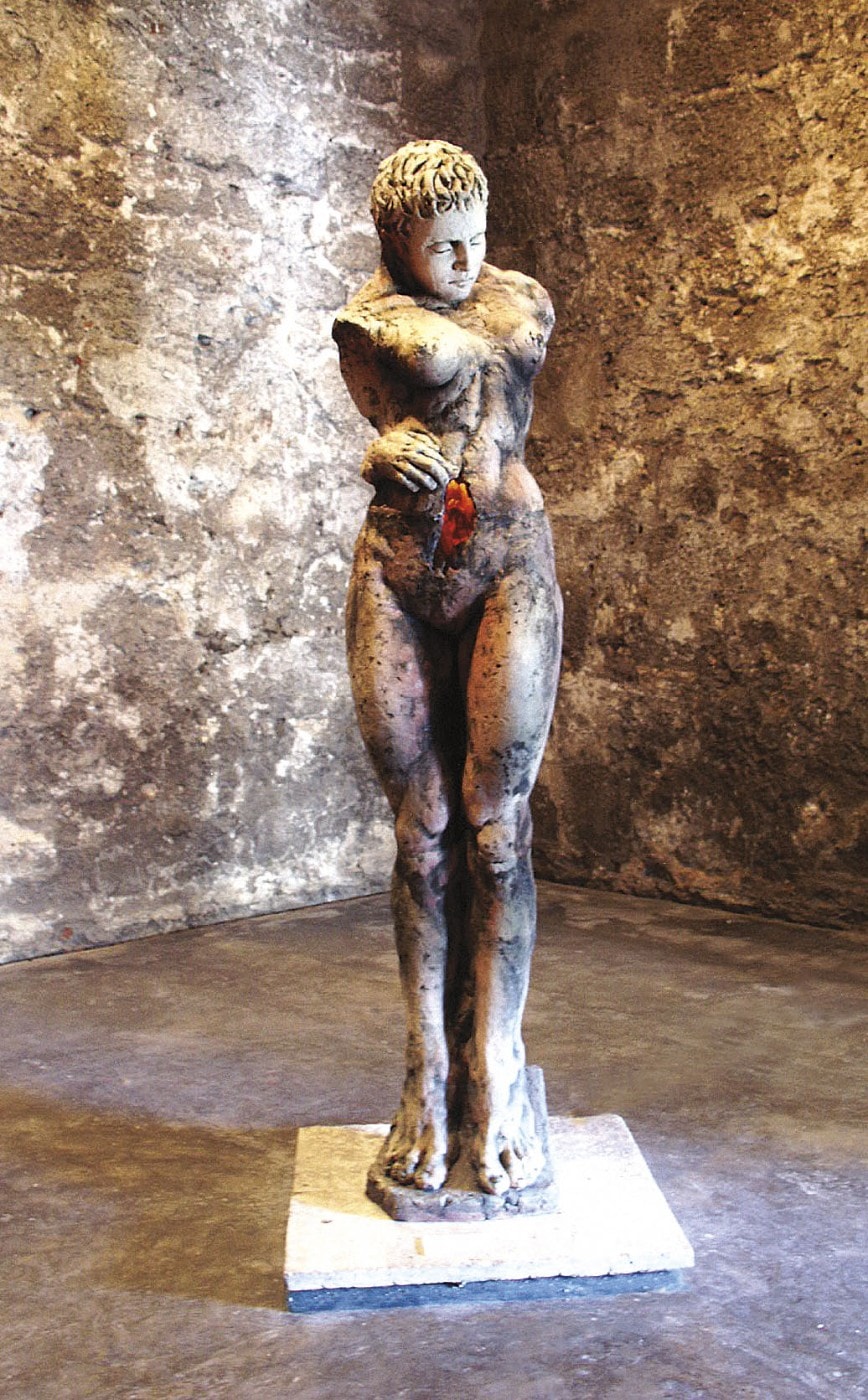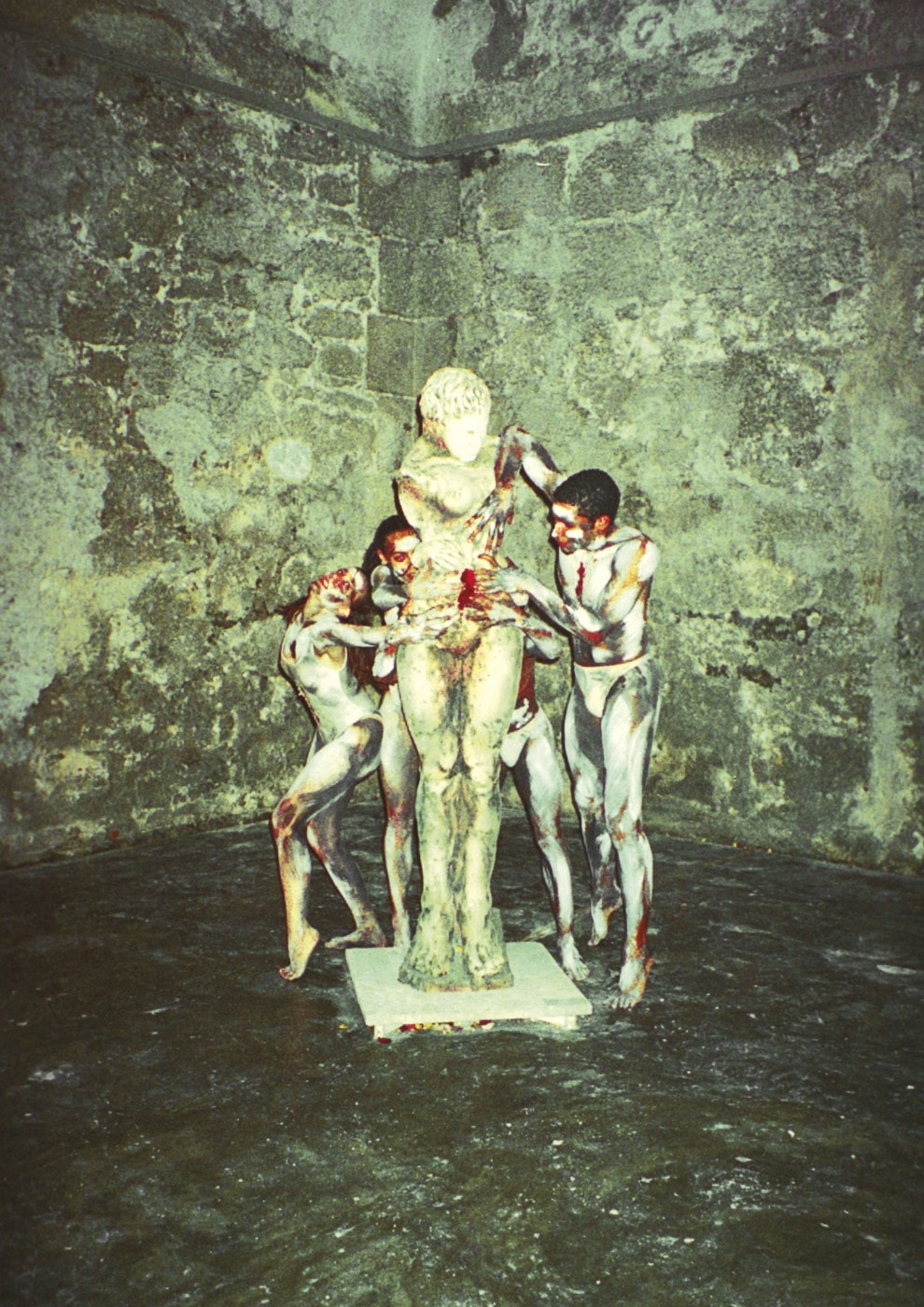HOLLOW AND
MUSCULAR
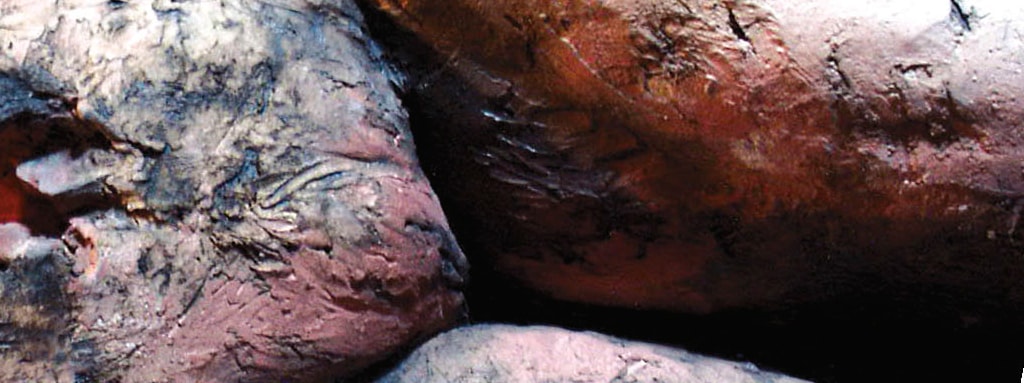
AGGRESSIVE, DELVING INTO THE
DARK, DENSER CORNERS OF HUMAN
NATURE, HE BECOMES LIKE A
SCALPEL THAT CUTS INTO ANATOMY
AS A WAY OF REVEALING THE TRUE
DEPTHS OF THE SUFFERING MASS
OF TISSUE AND FEELINGS THAT
MAKE US WHO WE ARE
A peculiar association results from the use of two terms that are not precisely opposites, but that show a certain opposition, the opposition that identifies typical poles of Rafael San Juan’s work in recent years to account for their approach; poles that, being universal, are eternal. In short, we are talking about the place that bodies occupy in space and to the void that contains or qualifies their structure.
The human body, as a constant, provides a field for experimentation where this young sculptor operates comfortably and exercises great care. He has chosen ceramic, not as his only material, but as one which will allow him a close approximation to the origins. This, one or the other element (including viscera or organic components, depending on the situation), plus smells and sound, until reaching the use of movement based on an imaginary performance to breathe life into the created figures.
An approach based on polarities can also be applied to the exploration of that which is permanent and to the ephemeral quality of his ideas. The ideas conceived by San Juan will not make their full impact on viewers until they have permeated everything that makes up the whole of the author’s experiences. Of course, once the performance component is finished, we are left with a work that reflects much experience in the handling of clay and plaster, the two blending and providing a place for the other, or perhaps being absolutely complicit in rendering the aesthetic message.
Balancing between two extremes inherent to his work, San Juan, like anyone creative, leaves room for ambiguity –the present polysemy–, so that anyone viewing his work finds him- self obliged to get inside the artistic code that has been created. So as not to leave the work abandoned in a labyrinth of possible interpretations, he leaves a trail, manipulates the background story, makes explicit references to classical antiquity and incorporates the dramatic contortions of expressionism and opens visceral cavities. Because if there is something one should not have doubts about when viewing a work which has already gone past the accepted limits of sculpture, to test the possibilities of the installation, it is the fact that the very fruits of the achievement present us with notions that are profoundly
* Havana, 1935
Journalist, art critic and curator.
Director of the National Museum of Artistic Ceramics.
Guy Pérez Cisneros Prize in Critique for the work of a lifetime


